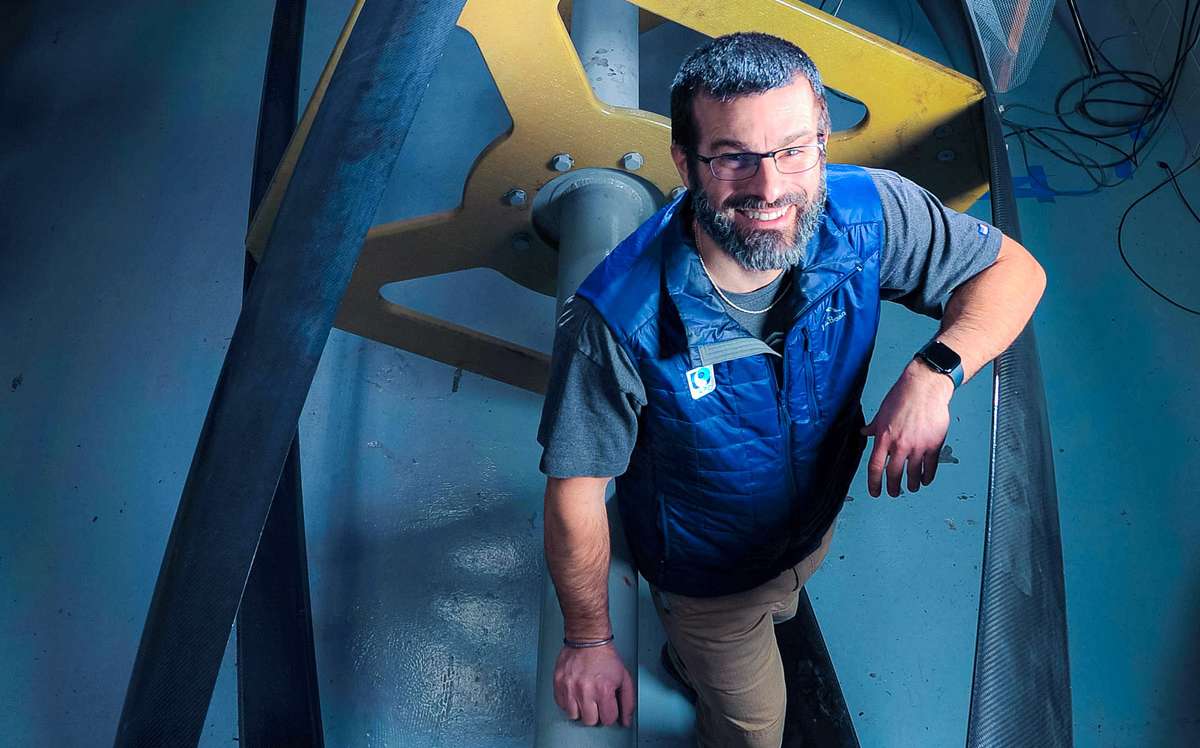
Power from the tides powers Ocean Renewable Power Co.'s business growth
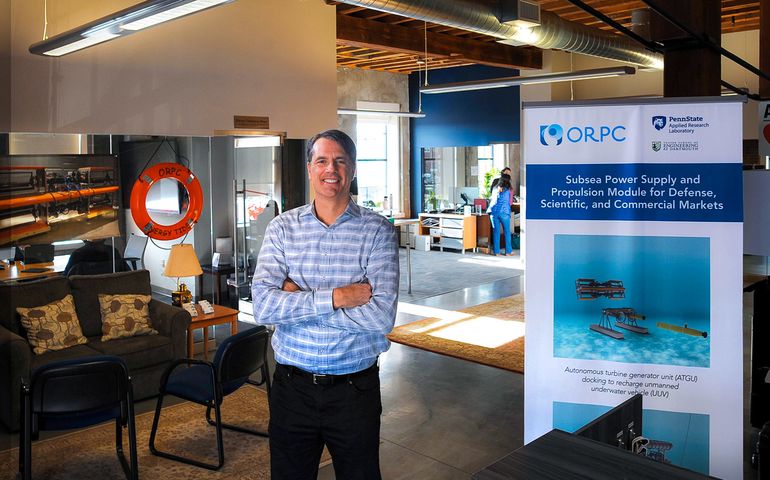 Photo / Fred Field
Stuart Davies, CEO of ORPC, says its river- and tidal-driven power generation systems have received market outreach from 48 countries.
Photo / Fred Field
Stuart Davies, CEO of ORPC, says its river- and tidal-driven power generation systems have received market outreach from 48 countries.
For the maker of a river-driven power system that depends on real-world application for its development, the first year of COVID “was incredibly challenging,” says Stuart Davies, CEO of Ocean Renewable Power Co., which is based in Portland.
“We were trying to keep our development projects moving forward when our entire team had to work remotely, there was no ability to conduct physical tank testing or to travel to monitor a device in a remote community,” Davies says. “There were no trade show opportunities to reach out to prospective customers.”
But that didn’t stop the team.
ORPC worked with the remote Alaskan village of Igiugig, where it had successfully deployed a pilot project, and with university researchers to develop pandemic safety and social distancing protocols that enabled the firm to have continued access to its projects.
The company leveraged cash relief provided by Maine Technology Institute and Coastal Enterprises Inc. Agencies, including the U.S. Department of Energy, continued to provide competitively awarded grants; investors provided sufficient liquidity to help ORPC weather the storm. The Paycheck Protection Program also helped.
“We have been working closely with the tribal village of Igiugig, Alaska, and that project should reach completion later this year,” says Davies.
Origin
ORPC was founded in Florida in 2004 by cruise ship executive Paul Wells, John Cooper and Chris Sauer, whose careers focused on developing and operating cogeneration and independent power projects. The goal? Build a technology to harness the power of moving water – rivers, ocean currents and tidal streams – without impeding flow or hurting marine life.
In 2006, a cooperative research and development agreement with the U.S. Navy led to the adoption of ORPC’s turbine generator unit design concept.
In 2007, ORPC opened offices in Eastport and Portland, then launched a prototype demonstration in Cobscook Bay and Eastport’s Western Passage to prove the technical feasibility of its turbine generator unit.
ORPC later deployed its RivGen Power System as a pilot project in Igiugig. That project made ORPC the only company worldwide to have built, operated and delivered power to a remote community grid from the renewable river project at Igiugig and to a utility grid from a pilot renewable tidal energy project in Eastport.
In 2019, ORPC unveiled a commercial river-power generation system.

Financing
Early financing came from competitively awarded grants from the U.S. Department of Energy and other entities and seed loans from the Maine Technology Institute’s Accelerated Commercialization Fund.
Family and friends provided early investment. In 2008, ORPC completed its first round of $5.5 million in angel funding, hired its first four employees and completed a year of successful demonstrations.
Day-to-day work involved prototype engineering, design and development; community engagement in Eastport and Alaska’s Cook Inlet region; outreach to vendors and manufacturers; seeking further investment, grant writing, learning the regulatory process, seeking permits and conducting environmental monitoring.
Scaling up
Successful demonstrations yielded more private investment and public sector research and development funding, resulting in more hires and projects and accelerated technology advancement.
“As we advanced our abilities in Maine, our work attracted the attention of remote communities around the world struggling with long-term environmental and economic sustainability,” says Davies.
In Igiugig, when completed, two RivGen devices will pair with a smart microgrid controller and battery from Schneider Electric to enable the community to operate without diesel generators most of the time.
This quarter, ORPC will deploy in Millinocket a Modular RivGen Power System, designed for major rivers and smaller waterways.
Today, ORPC has offices in the U.S., Canada, Europe and Chile and a staff of 38, including 29 in Maine at its Portland headquarters, Brunswick engineering lab and Eastport test center. More positions will be added this year. Overall, it’s spent over $50 million statewide.
Last year, it raised a $25 million private investment round led by Canadian Shield Capital and Hatch. The near-term focus is to get additional devices in the water to demonstrate effectiveness.
For this year, goals include completing the Igiugig project, deploying in Chile, and introduce three new products to the market: the Modular RivGen river device, TidGen-80 community scale tidal device, and a large-scale tidal device, Optimor, currently under development in Europe.
“To date, we’ve received market outreach from 48 countries, 25 U.S. states and 11 Canadian provinces and territories about installing our systems,” says Davies. “We look forward to turning these inquiries into projects and deployments over the next few years.”
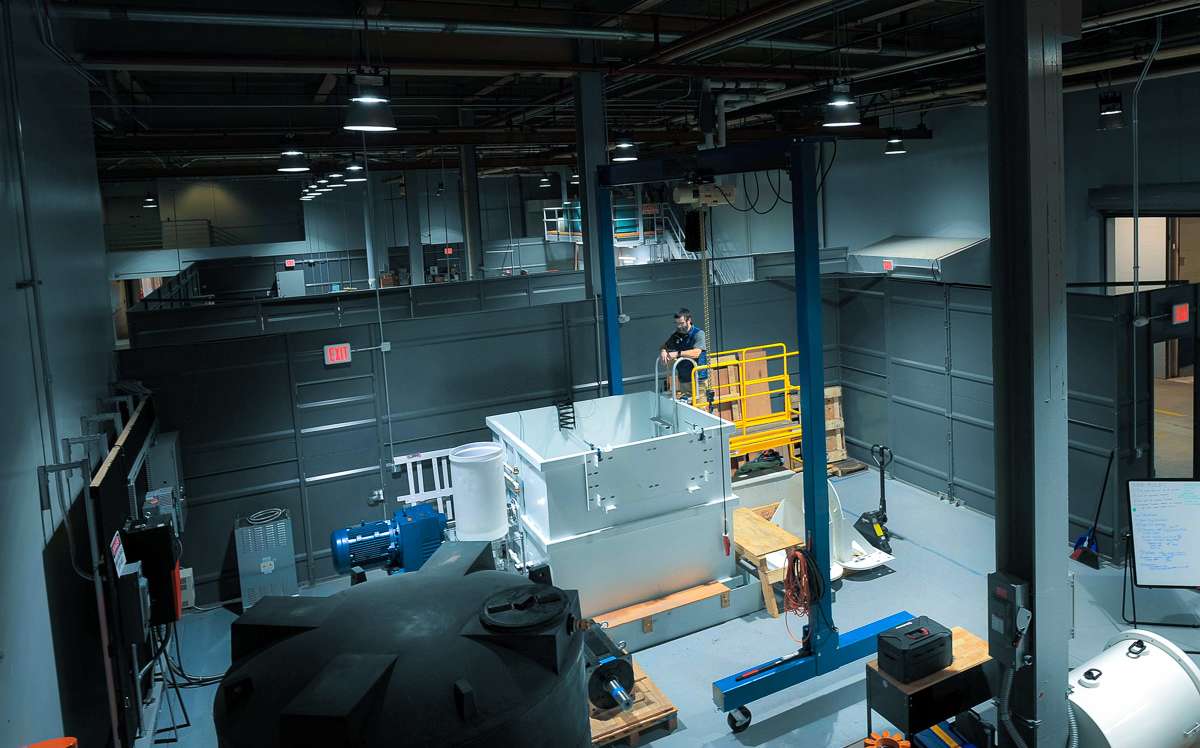

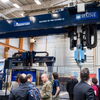





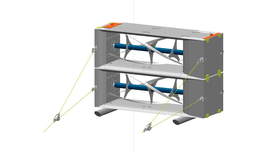
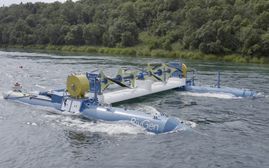
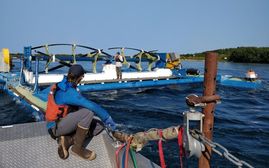




0 Comments